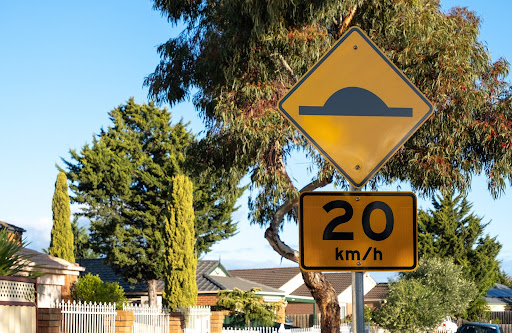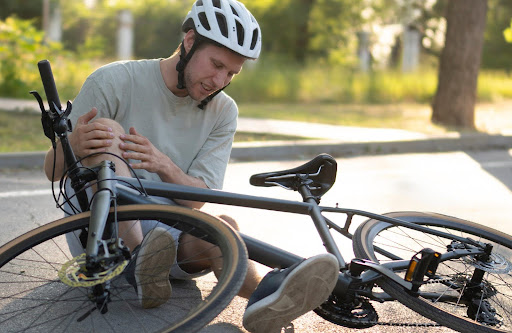
For many neighborhoods, community speed bumps can be the ideal solution to reducing speeding. Speed bumps offer advantages and disadvantages, though, so it’s important to consider these before making a decision.
Installing speed bumps comes with several benefits, including enhancing road safety, minimizing vehicular accidents, supporting the enforcement of speed limits, and reducing the severity of injuries.
In 2020, speeding-related traffic accidents caused over 11,200 fatalities in the United States alone. The simple addition of speed bumps can help curb this.
When drivers see community speed bumps on the road, they must slow down. This can be very helpful in neighborhoods with many children who play outside. Speed bumps are also significant for areas near parks and schools.
When vehicle speeds are reduced, the risk of accidents is reduced. As such, speed bumps can make the roads safer for everyone—drivers and pedestrians included.
If there are a lot of blind spots and narrow streets in your neighborhood, speed bumps can be of great value. They can reduce accidents in these parts, as tight spaces or blind spots make things difficult for drivers. Collisions are even more likely if drivers go fast in these areas. As speed bumps force drivers to slow down, you can minimize vehicular accidents.

A speed calming device in your community can help enforce posted speed limits. One such example is a speed bump.
Drivers tend to ignore speed limits, especially when they think they can get away with it. It’s even more common in quiet residential areas where speed cameras aren’t present. Speed bumps, though, will force drivers to take it easy on the gas pedal, making them stick to the speed limit.
Accidents happen – that’s just a fact. However, you can significantly reduce the severity of injuries with the help of speed bumps. Speed bumps make cars go slower, and injuries are less severe when cars move slowly. This makes it safer for pedestrians, cyclists, and drivers alike.
Despite their benefits, community speed bumps also have a few downsides. These include the potential for more noise, air pollution, and specific hazards. Their appearance can also lower property values.
Speed bumps may force drivers to slow down, but they usually hit the gas immediately after passing them. This sudden increase in speed can cause revving sounds, which are very noisy. They’re even louder when they come from large vehicles. Living near a speed bump might make you annoyed by the constant noise.
Speed bumps force drivers to brake and speed up again, contributing to more fuel consumption. More fuel consumption, in turn, increases air pollution. Thus, if you have a lot of traffic in your area, you might encounter a higher rate of air pollution. This can lead to negative health effects and a bad environmental impact.

While speed bumps slow cars down, they can be hazardous to some individuals. Bicycle riders and pedestrians may find it challenging to navigate through speed bumps. Elderly residents who use walking aids, in particular, may have a more challenging time. As you know, an uneven road can lead to potential accidents.
Speed bumps may contribute to lower property values for several reasons. For one thing, the noise and inconvenience associated with them may deter buyers away. Speed bumps can also look ugly or clumsy so that they may reduce curb appeal.
If you do decide to install speed humps in your community, there is a clear process to follow. Keep in mind that this mainly applies to private neighborhoods with HOA control.
The first step is to gauge whether homeowners want to install speed bumps. Having the community’s backing is essential, as the decision will affect everyone. Board members should hold a meeting or survey to gain feedback before pursuing the decision.
Even though you might live in a private neighborhood, local government approval may still be necessary. Contact your city or county’s public works department to ensure you meet all legal requirements before installing speed bumps. You may also need to get approval from emergency services, as speed bumps can slow them down, too.

Specific guidelines govern how speed bumps should be designed and installed. These include dimensions, placement, signage, and height restrictions. Understand these requirements to ensure the bumps are effective and legal.
Speed bump installation isn’t cheap. You must budget for materials, labor, and any additional signage. After approving the decision, you must find room in the budget for it. Alternatively, you can raise money by levying special assessments.
When making changes to the neighborhood’s roads, purchasing insurance is a good idea. This will protect the community from liability in case of accidents caused by the speed bumps.
The process is different for non-private neighborhoods or if you want to install community speed bumps on public roads. You will likely need to contact your local government and file a request. For example, you can make a request here in Durham. In Fayetteville, you may submit a petition here. And, in Raleigh, you can request a traffic calming project here.
Speed bumps are not the only solution to a speeding problem. You can achieve similar results and increase road safety through other means.
Community speed bumps pose both benefits and drawbacks. Whether or not your community needs them depends on your unique situation. Consider exploring other options before installing speed bumps in your neighborhood.
Pothole Repair Carolinas offers concrete maintenance services around North and South Carolina. Call us today at 704-227-0468 or contact us online for more information!
RELATED ARTICLES: